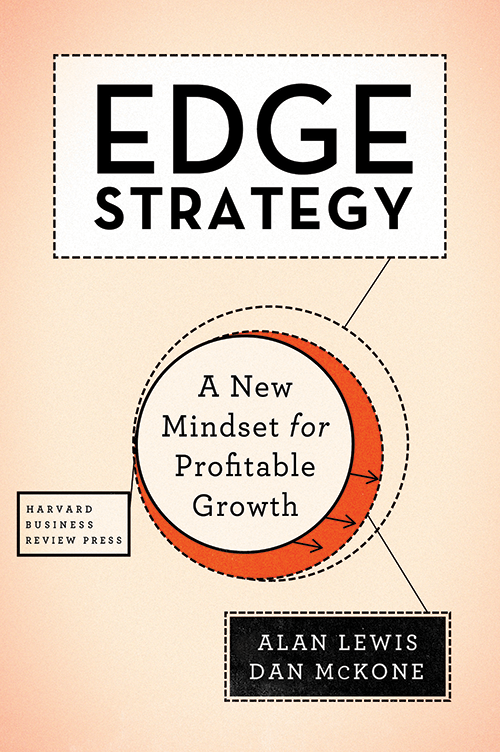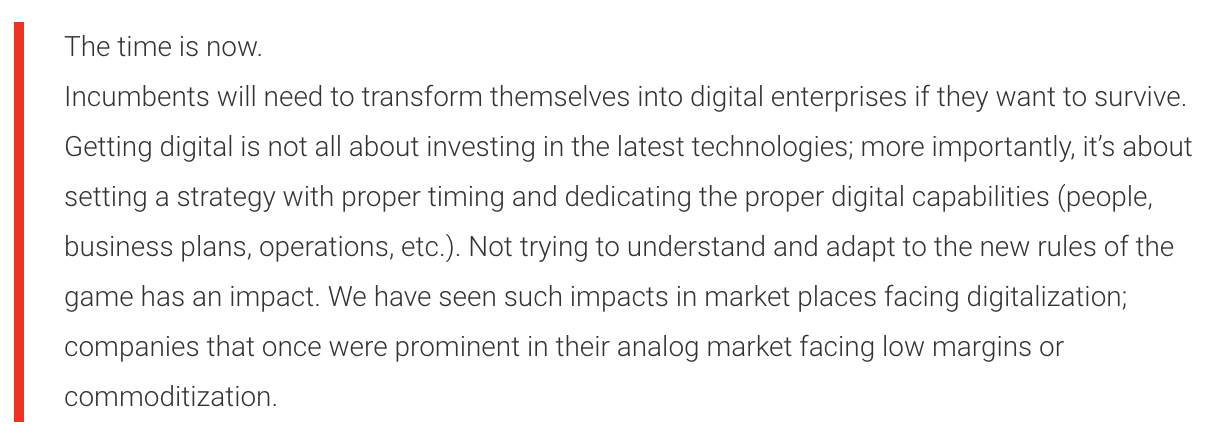
Published on 12/04/2017 | Strategy
There is a common belief that the first in are always the winners, that to leverage digital transformation and innovation the first is the one that takes it all. This can be a belief in IoT as well. Bill Gross, IdeaLab’s CEO, did a research study (available on http://www.idealab.com) on what made startups successful among 5 essential elements: ideas, team, business model, funding and finally timing.

Indeed, continuous innovation in the IoT market, as well as others, enables pioneers to defend their market share against new entrants. Peter N. Golder and Gerard J. Tellis in their research Pioneer Advantage: Marketing Logic or Marketing Legend highlight that market pioneers are de facto market leaders upon entry.

Their results suggest that “being first in a new market may not confer automatic long-term rewards. An alternative strategy worth considering may be to let other firms pioneer and explore markets, and enter after learning more about the structure and dynamics of the market. Indeed, early leaders who entered an average of 13 years after the pioneer are more likely than pioneers to lead market today”.
Thus, this advice should be applied in all markets, including (but not limited to) the IoT marketplace.
Another common belief is that startups have all the cards in their hands to beat the well-established analog companies. In fact, analog companies have great weapons to fight back and even lead the digital transformation; especially if they leverage their considerable resources to fight off the attacks including:


IoT changes the rules of the game. In some areas, the IoT Market changes the game entirely.
The completely new business models adopted by Airbnb and Uber illustrate how severe the disruption can be.
Manufacturers need to be not only willing and able but nimble in pivoting quickly, in this fast-moving technological revolution. Changes will occur at lightning speed, both in technology and the marketplace and the consumers’ tastes will probably change alongside at every blink of an eye.

IoT and the potential disruptions it may cause also comply with those four scenarios:

Choosing to ignore these technologies and the digital transformation they implicate, is a convenient option. Ignoring is a deliberate choice; it will, at best, prevent your business from profiting from the changes. At worst, your analog business will find itself floundering and eventually may even fail.
Indefinitely procrastinating may be a related choice, due to trepidation, budgetary or resource limitations or plain naiveté in thinking you are too big to fail or that the new paradigm doesn’t apply. The challenges will only become bigger and more complicated.

Another strategy is to milk the cow; in other words, to continue doing what you’ve been doing without embracing the digitalization of the environment in which your company operates. The difference with option #1, is that in this option, a conscious decision is made to take advantage of your current market position without, deliberately preparing for the future.
This strategy is all about leveraging your current market position and associated organization, channels, operations and so forth, to deliver financial performance without the burden, and associated financial impacts, of going through digital transformation of your portfolio, organization and so forth.
The advantage that the newcomers have when a market begins to evolve due to digitalization, is in fact also a disadvantage for them concerning the historical analog businesses and channels. Very often the cost of entering those analog marketplaces is so high, not only from a technological aspect but also when taking into account the channels, manufacturing and logistics capabilities, patents, etc… that it places important barriers keeping your analog a safe heaven, for a while. Unfortunately, this analog safe heaven is, sooner or later, being attacked by the digital newcomers. This is the option that Kodak chose, and it served them well for several years until the quality of the technology improved and the cost decreased. By that time, it was too late for Kodak to change direction, but they did thrive for several years leveraging their analog market place predominant position.

You can try to move the mothership; in other words, you can attempt to implement the new paradigm throughout your organization and marketplace. This process is extremely difficult and complicated, and the risk is very high. Changing existing procedures, markets, and processes can prove to be impossible, and the likelihood of failure is high. This scenario also assumes there is time to research products and services, hire or retrain staff and restructure or reorient the business as appropriate.

A better option is to maintain your existing markets and channels—keep the mothership afloat—while investing money into creating a new opportunity at the edge of your core offerings. You could liken this to an organ transplant: you’re keeping the body alive while you change out the other parts for newer and more modern parts.
As stated by Alan Lewis and Dan McKone’s in their book Edge Strategy: A new mindset for profitable growth; Edge strategies are less risky and can bring a higher return than many other options when a company needs to grow their revenue and associated profits. The risk and the resulting costs, are often subsidized by another area of the organization, very often the historical analog part of the business, which has the capacity to carry such financial burden thanks to its healthier balance sheet.
Edge strategies are ideal in those transition periods as they are about harvesting more value from existing assets while simultaneously stepping out into the IoT marketplace that is yet not well or fully understood.
Edging strategies also contribute to financial performance. Later in Edge Strategy: A new mindset for profitable growth, Lewis and McKone explain: “Edge achievers have increased risk-adjusted shareholder returns by more than 15 percent versus their peers. Furthermore, these companies have outgrown their peers by 39 percent”.
Transforming from the edge requires retraining and/or the reallocation of resources (people, products, manufacturing capabilities, supply chain capabilities, etc.) in addition to adapting the organization to the new rules of the game. If you want to tap into the IoT opportunity and your company is an established analog player, then this strategy should be studied. It enables organizations to mix, both, their existing analog business and operations with the needed transformation resulting from the digital evolution of the market place. Analog specificities such as intellectual property, customer base, unique value proposition are your safe heaven guardians’. They must be leveraged in order to help your organization leap ahead all of the newcomers that will have to bear high costs to assemble even a portion of those assets.

I very often meet people that are afraid to ask the questions that, in fact, everyone is looking to have an answer to such as:
‘A fool thinks himself to be wise, but a wise man knows himself to be a fool.’ William Shakespeare
You might be finding a lot of commercial and IoT marketing books but very often with a lack of strategic guidance or anecdotal reference to what companies are facing. None of the technology books and blogs expanded on the IoT, beyond the pure technology element, in a way that would help companies understand how to transform, leverage themselves and supersede their competition.
I want to bring an answer to those questions through blogs, interviews and books.
Check out my website to know more: www.nicolaswindpassinger.com